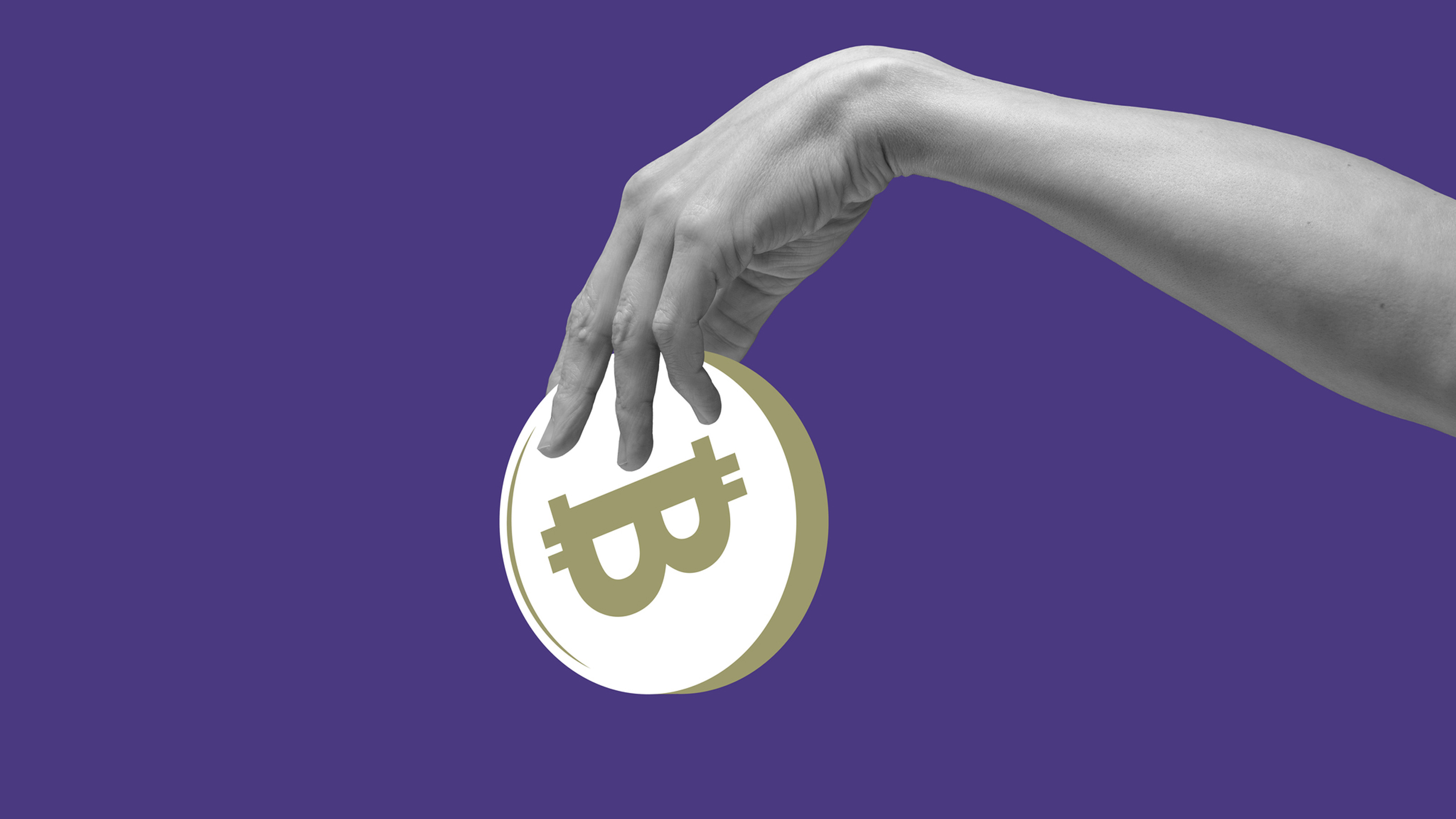Is Crypto Investing Really Worth It?
If your interest in investing in Bitcoin or other cryptocurrency is based mainly on a fear of missing out, step back for a second and do some research.


There seem to be several camps of thought when it comes to investing in cryptocurrencies. The largest camp includes investment firms and investors who add certain “safer” cryptocurrencies to their portfolios after expending a minimal level of due diligence. For them, the choice to purchase and hold cryptocurrency is based on “FOMO,” fear of missing out, and a recognition (and willing acceptance) that the risk/reward determination behind the investment is similar to buying lottery tickets. Somebody will win, the logic goes; it might as well be me.
The other camps, the sizes of which are difficult to determine, have done sometimes extensive research and have concluded that cryptocurrencies are either:
- A Ponzi scheme dependent on a steady influx of greater fools,
- A foolproof way to get rich if you only stick with it, or
- The future of financial exchanges when crypto eventually replaces fiat currency, such as the U.S. dollar, which is backed by a centralized federal banking system. They think cryptocurrency will provide completely decentralized financial transactions that free investors from the currency manipulations of sovereign nations and wealthy oligarchs. They also believe crypto’s blockchain technology will revolutionize privacy and security in numerous uses, from medical records to voting records.
Just describing the basics of cryptocurrency requires a vocabulary that easily obfuscates its reality. Purveyors of crypto investing have been accused of dismissing valid inquiries as petty ignorance by the intellectually inferior. This article will address some of the promises and issues related to crypto so you can decide the most important question: Is crypto investing worth your time and money?
From just $107.88 $24.99 for Kiplinger Personal Finance
Become a smarter, better informed investor. Subscribe from just $107.88 $24.99, plus get up to 4 Special Issues

Sign up for Kiplinger’s Free Newsletters
Profit and prosper with the best of expert advice on investing, taxes, retirement, personal finance and more - straight to your e-mail.
Profit and prosper with the best of expert advice - straight to your e-mail.
Understanding the basics
There are three ways to acquire cryptocurrency:
- After opening an online account, you can choose among a staggering number of cryptocurrencies to purchase through a brokered exchange. Your purchase and sale of the “coins” will look very similar to any other security, except that the market never closes and the price fluctuation is both highly volatile and completely untrustworthy.
- You can establish a “wallet” to hold crypto that you buy from someone else using one of many peer-to-peer online access points. This type of ownership carries much greater risks from price manipulation, scammers and a total lack of privacy (more on that later), but provides the free capitalist environment promised by an unregulated and decentralized exchange.
- Finally, you can create new coins for yourself by “mining” crypto.
Every unit of a cryptocurrency, the “coin,” is the product of a created “block” (and every coin consists of a million smaller digital units). The block is created when someone, a “miner,” applies a significant investment in a series of highly sophisticated and interconnected computers and servers (the hardware alone may cost more than $12,000) and in computing power (sources report as much as 86,000 kWh in electricity expended per coin, costing as much as $5,000 in some states) to solve a puzzle that is automatically presented following the successful solution of the puzzle before it. Any number of miners attack the puzzle at the same time, and the miner who solves it first adds a “block” to the “blockchain” that evidences the coins the winner received for the solution. Blockchain puzzles get solved about every 10 minutes, and the difficulty level and coins won for each new puzzle are dependent on the number of miners who attempted the previous one.
The blockchain is a digital ledger that cannot be altered, with each new block appended to the ledger in the order of its creation. The blockchain is available to anyone with the desire to download it and a server with enough memory to hold the entire chain. The blockchain is tested for accuracy through a “proof of work” protocol that verifies the blockchain by comparing the ledgers recorded across these numerous storage servers. If someone attempted to alter the blockchain to obtain cryptocurrency fraudulently, the redundant ledgers would uncover the attempt and discard the alteration. It is this decentralized system for tracking ownership of cryptocurrency that is supposed to provide confidence in its value.
No one can say just how many such blockchain ledgers are stored for each cryptocurrency, how often attempts are made to introduce a fraudulent ledger or how such ledgers are sorted out if several different versions are created at once. Considering the cost and fragility of the hardware, the unavoidable occurrence of human error and negligence, and the already well-documented fraud and theft related to crypto, any confidence in this decentralized governance of its accuracy and valuation may be foolhardy.
The limitations of crypto
But let’s talk about the market for crypto. In spite of stories about a few countries and retailers accepting cryptocurrency, which have been debunked or proven insignificant, crypto may now only be exchanged for actual fiat currency or other digital assets in the form of “non-fungible tokens” or NFTs. We are a long way from establishing the market confidence in the value and stability of cryptocurrency necessary for it to be used for the purchase of goods and services, bypassing fiat money. And that’s the rub: There is no reason to believe that even the most exchanged cryptocurrency will ever achieve the price stability necessary for sellers to accept it. Today, there is no market for direct exchange of cryptocurrency, with purchases instead relying first on liquidation of the crypto to a fiat currency.
The Internal Revenue Service (IRS) treats crypto as a financial asset or property and will treat properly documented gains and losses in crypto liquidation just like other assets. You may note that the 2022 Form 1040 includes a question whether you have ever purchased crypto, even if you haven’t sold any. Which leads us back to privacy. Transactions in crypto are completely transparent to anyone sophisticated enough to review the blockchain. This digital trail will certainly be used by governments to track exchanges. It is already undeniable that crypto is being used in money laundering, ransomware attacks and other criminal activities to avoid federal banking oversight. Even if the blockchains are secure, other crypto repositories, such as exchanges and wallets, have been hacked, with reported losses in the millions of dollars.
Today’s crypto price volatility is absolutely untethered from any expectation of its use as currency. The volatility crypto owners experience now is the product of rumor and speculation. This is why some feel that cryptocurrency is a Ponzi scheme fueled by stories of sellers taking advantage of the huge price swings that occur when celebrity investors and billionaires engage in promotions or whenever a new record is set for a crypto purchase of digital art. In fact, the only way to make money on crypto is to sell out when others are heavily buying in, since the coins have no intrinsic value and aren’t tied to any production or services.
The rise of NFTs
Finally, about digital art. Today, we see many examples of blockchain technology being used to create non-fungible tokens, or NFTs. An NFT really is a token, a stand-in for any digital creation one may house there. It could be a photo in the form of a JPEG file, a video file, a text file (such as a contract, a deed to property, a single vote for a political candidate or a poem) or any number of other supposedly unalterable digital creations. The value of the NFT is not in any apparent uniqueness, since it can be readily copied, but in its actual uniqueness, because it is forever tied to its place in the blockchain.
However, an NFT only has the value one might exchange for it, either in other NFTs or in cryptocurrency coins. For example, if I buy a NFT digital artwork for one Bitcoin today (Bitcoin is trading as I type this at $38,686 per coin), then the seller could sell that coin immediately for dollars or could hold onto that coin in hopes it will trade higher later. For example, Bitcoin traded at about $67,000 per coin on Nov. 7, 2021, but also traded for about $29,000 per coin on July 19, 2021. What will it trade for next month?
The Wild West
All this is not to say that cryptocurrency as an investment and a method of exchange will or should be eliminated. Blockchain technology is an incredible advancement in the security and utility of information exchanges. Certain appropriate uses are already emerging. And investing in more speculative alternative assets is certainly an appropriate part of a diversified portfolio. But we’re in the Wild West of cryptocurrency today and, like the Western territories in American history in which intrepid homesteaders traced the paths of the explorers, one must consider the inherent risks faced by early adopters.
Profit and prosper with the best of Kiplinger's advice on investing, taxes, retirement, personal finance and much more. Delivered daily. Enter your email in the box and click Sign Me Up.

Timothy Barrett is a Senior Vice President and Trust Counsel with Argent Trust Company. Timothy is a graduate of the Louis D. Brandeis School of Law, past Officer of the Metro Louisville Estate Planning Council and the Estate Planning Council of Southern Indiana, Member of the Louisville, Kentucky, and Indiana Bar Associations, and the University of Kentucky Estate Planning Institute Committee.
-
 23 Last-Minute Gifts That Still Arrive Before Christmas
23 Last-Minute Gifts That Still Arrive Before ChristmasScrambling to cross those last few names off your list? Here are 23 last-minute gifts that you can still get in time for Christmas.
-
 The Rule of Compounding: Why Time Is an Investor's Best Friend
The Rule of Compounding: Why Time Is an Investor's Best FriendDescribed as both a "miracle" and a "wonder," compound interest is simply a function of time.
-
 4 Great Tools to DIY Your Own Financial Plan
4 Great Tools to DIY Your Own Financial PlanSmart Savings Several tools picked out by Kiplinger that DIYers can use to make their own financial plan.
-
 If You're a U.S. Retiree Living in Portugal, Your Tax Plan Needs a Post-NHR Strategy ASAP
If You're a U.S. Retiree Living in Portugal, Your Tax Plan Needs a Post-NHR Strategy ASAPWhen your 10-year Non-Habitual Resident tax break ends, you could see your tax rate soar. Take steps to plan for this change well before the NHR window closes.
-
 Your Year-End Tax and Estate Planning Review Just Got Urgent
Your Year-End Tax and Estate Planning Review Just Got UrgentChanging tax rules and falling interest rates mean financial planning is more important than ever as 2025 ends. There's still time to make these five key moves.
-
 What Makes This Business So Successful? We Find Out From the Founder's Kids
What Makes This Business So Successful? We Find Out From the Founder's KidsThe children of Morgan Clayton share how their father's wisdom, life experience and caring nature have turned their family business into a respected powerhouse.
-
 Past Performance Is Not Indicative of Your Financial Adviser's Expertise
Past Performance Is Not Indicative of Your Financial Adviser's ExpertiseMany people find a financial adviser by searching online or asking for referrals from friends or family. This can actually end up costing you big-time.
-
 I'm a Financial Planner: If You're Not Doing Roth Conversions, You Need to Read This
I'm a Financial Planner: If You're Not Doing Roth Conversions, You Need to Read ThisRoth conversions and other Roth strategies can be complex, but don't dismiss these tax planning tools outright. They could really work for you and your heirs.
-
 Could Traditional Retirement Expectations Be Killing Us? A Retirement Psychologist Makes the Case
Could Traditional Retirement Expectations Be Killing Us? A Retirement Psychologist Makes the CaseA retirement psychologist makes the case: A fulfilling retirement begins with a blueprint for living, rather than simply the accumulation of a large nest egg.
-
 I'm a Financial Adviser: This Is How You Can Adapt to Social Security Uncertainty
I'm a Financial Adviser: This Is How You Can Adapt to Social Security UncertaintyRather than letting the unknowns make you anxious, focus on building a flexible income strategy that can adapt to possible future Social Security changes.
-
 I'm a Financial Planner for Millionaires: Here's How to Give Your Kids Cash Gifts Without Triggering IRS Paperwork
I'm a Financial Planner for Millionaires: Here's How to Give Your Kids Cash Gifts Without Triggering IRS PaperworkMost people can gift large sums without paying tax or filing a return, especially by structuring gifts across two tax years or splitting gifts with a spouse.